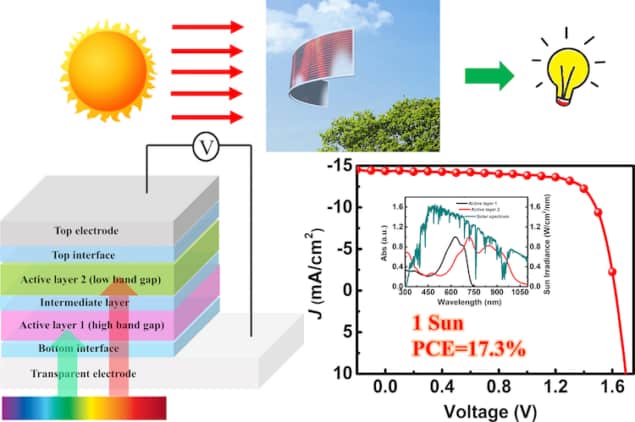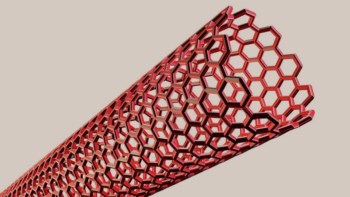
Organic solar cells could be as efficient as those based on inorganic materials such as silicon and perovskites. This is the new finding from researchers in China who have determined which photoactive material combinations are best for making “tandem” devices. Test cells made in the laboratory reach power conversion efficiencies (PCEs) of 17.3%, a value that is significantly higher than the current 14 to 15%. This value might even reach 25% with further optimization, they say.
Organic photovoltaics (OPVs) show much promise for next-generation solar cells thanks to their low cost, and the fact that they are flexible and can be printed over large areas. Indeed, researchers have succeeded in improving the PCE of these cells from around 5% to 14-15% over the last decade by making so-called tandem cells in which photoactive layers with complementary light absorption characteristics are stacked on top of each other. In this way, they have made cells that absorb over a wider range of sunlight wavelengths than single materials. This is because the photoactive organic materials in each subcell can be designed with different but matching energy bandgaps.
Although 14-15% is impressive, this value lags behind that of photovoltaic platforms based on inorganic materials, which for their part boast PCEs of between 18 to 22%. One of the main reasons for the relatively low PCE of OPVs is the limited sunlight absorption range of materials used to make the rear subcell in the devices. Indeed, most of these materials can only absorb photons with energies of around 1.3 eV (90 nm), which means they miss a large part of the solar spectrum.
Screening for the most efficient photoactive materials
A team of researchers led by Yongsheng Chen of Nankai University in Tianjin has now developed a semi-empirical model to predict which materials work best together in tandem cells. “We screened for the most efficient photoactive materials and then found the optimal match for both the front and rear subcells in these devices,” explains Chen. “Our analyses are based on previous theoretical works and state-of-the-art experimental results.
“Thanks to our calculations, we were able to make solution-processed two-terminal monolithic tandem OPV cells with a remarkable new record PCE of 17.3%.”
“According to our analyses, the OPV of 17.3% could be increased further to 25% and these materials could be as good as other solar technologies,” Chen tells Physics World. “OPVs thus show great potential for commercial applications.”
The team, which includes researchers from the National Center for Nanoscience and Technology in Beijing and South China University of Technology in Guangzhou says that it is now busy looking for even better material combinations for making OPV tandem solar cells and improving their stability. “We found that while the initial stability tests show that the devices are stable and degrade by only 4% after 166 days, their long-term stability needs further testing and optimization,” says Chen.



